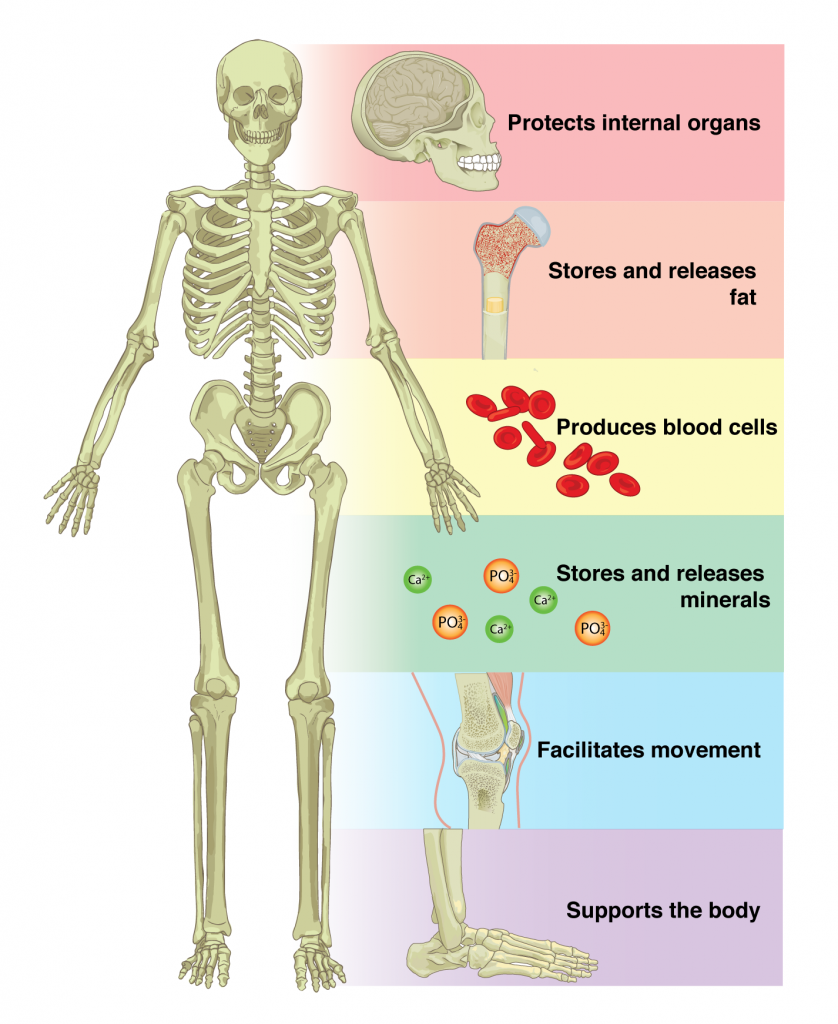
How does the Skeletal System Support and Protect Other Organs in the Body?
The skeletal system, consisting of bones, cartilage, and connective tissues, serves as the body’s structural framework. While its primary function is to provide support and facilitate movement, the skeletal system also plays a vital role in protecting delicate organs and tissues. In this comprehensive article, we will explore how the skeletal system supports and safeguards other organs in the body, emphasizing its critical role in maintaining overall health and functionality.
1. Structural Support
The most fundamental role of the skeletal system is to provide structural support for the entire body. Without the skeletal system, the human body would be a soft, formless mass. Bones serve as the scaffold upon which muscles, ligaments, and tendons attach, allowing for upright posture and enabling movement.
2. Protection of Vital Organs
One of the most crucial functions of the skeletal system is the protection of vital organs. Several major organs are shielded by the bones, effectively reducing the risk of injury:
a. Skull and Brain Protection: Cranial Bones
The skull, formed by cranial bones, encases and safeguards the brain from trauma and injury. The cerebrospinal fluid between the brain and the skull acts as an additional cushioning mechanism.
b. Thoracic Cage and Organs: Ribs and Sternum
The ribcage, composed of ribs and the sternum (breastbone), forms a protective cage around the heart and lungs. It acts as a barrier against external forces that could potentially damage these vital organs.
c. Spinal Cord Protection: Vertebrae
The spinal cord, an extension of the central nervous system, is protected by the vertebrae, which form the spinal column. The vertebrae act as a bony shield, safeguarding the delicate nerves of the spinal cord.
d. Pelvic Girdle and Abdominal Organs
The pelvic girdle, consisting of the hip bones, provides structural support for the lower torso and protects the abdominal organs, including the bladder and reproductive organs.
3. Leverage for Movement
Bones, through their attachment to muscles via tendons, act as levers that facilitate movement. The skeletal system works in conjunction with the muscular system to produce a wide range of movements, from walking and running to fine motor skills like writing. Without the rigid support of bones, our muscles would have no framework to exert force against, making coordinated movement nearly impossible.
4. Blood Cell Production
Certain bones, particularly the long bones in the limbs and the flat bones in the skull, house the bone marrow. Bone marrow is responsible for producing blood cells, including red blood cells (erythrocytes), white blood cells (leukocytes), and platelets (thrombocytes). This function of the skeletal system is crucial for maintaining the body’s overall health, as it ensures a continuous supply of blood cells for oxygen transport and immune defense.
5. Mineral Storage and Homeostasis
Bones also serve as a reservoir for essential minerals, primarily calcium and phosphorus. When blood levels of these minerals drop, bones release calcium and phosphorus into the bloodstream to maintain the body’s mineral balance. This function is essential for various physiological processes, including muscle contraction, nerve function, and blood clotting.
6. Framework for the Body’s Systems
Beyond its role in supporting and protecting vital organs, the skeletal system serves as a framework for other systems in the body. For instance, the respiratory system relies on the ribcage for the mechanics of breathing, and the muscular system uses bones as attachment points for muscle fibers to create movement.
Conclusion
The skeletal system is not merely a passive structure that gives shape to the body. It is a dynamic and interconnected system that plays a multifaceted role in supporting, protecting, and enabling the proper functioning of other organs and systems. Without the skeletal system, the body’s vital organs would be vulnerable to injury, and the ability to move and perform daily tasks would be severely compromised. Thus, the skeletal system’s significance extends far beyond its role as a structural framework; it is an indispensable component of the body’s overall health and functionality.



